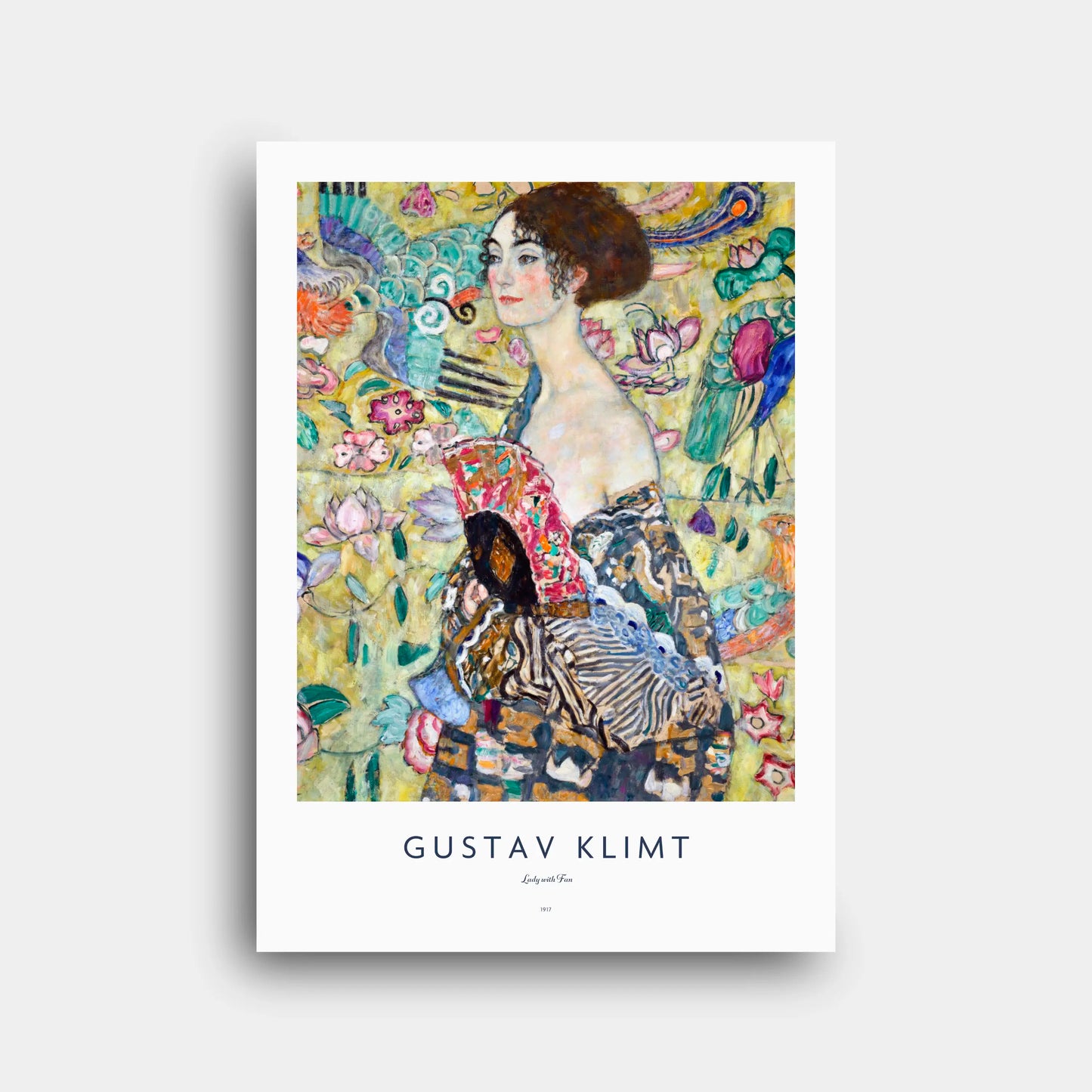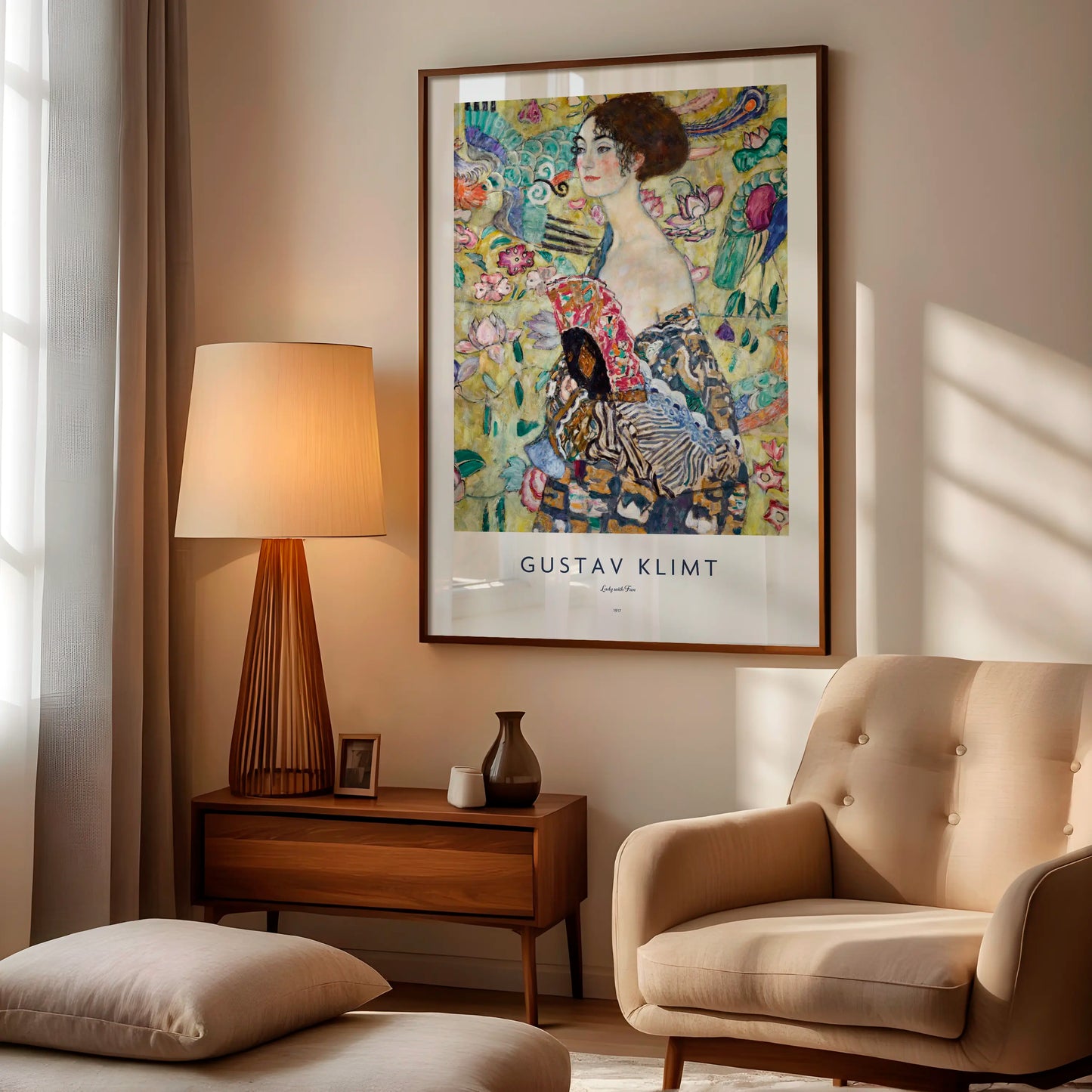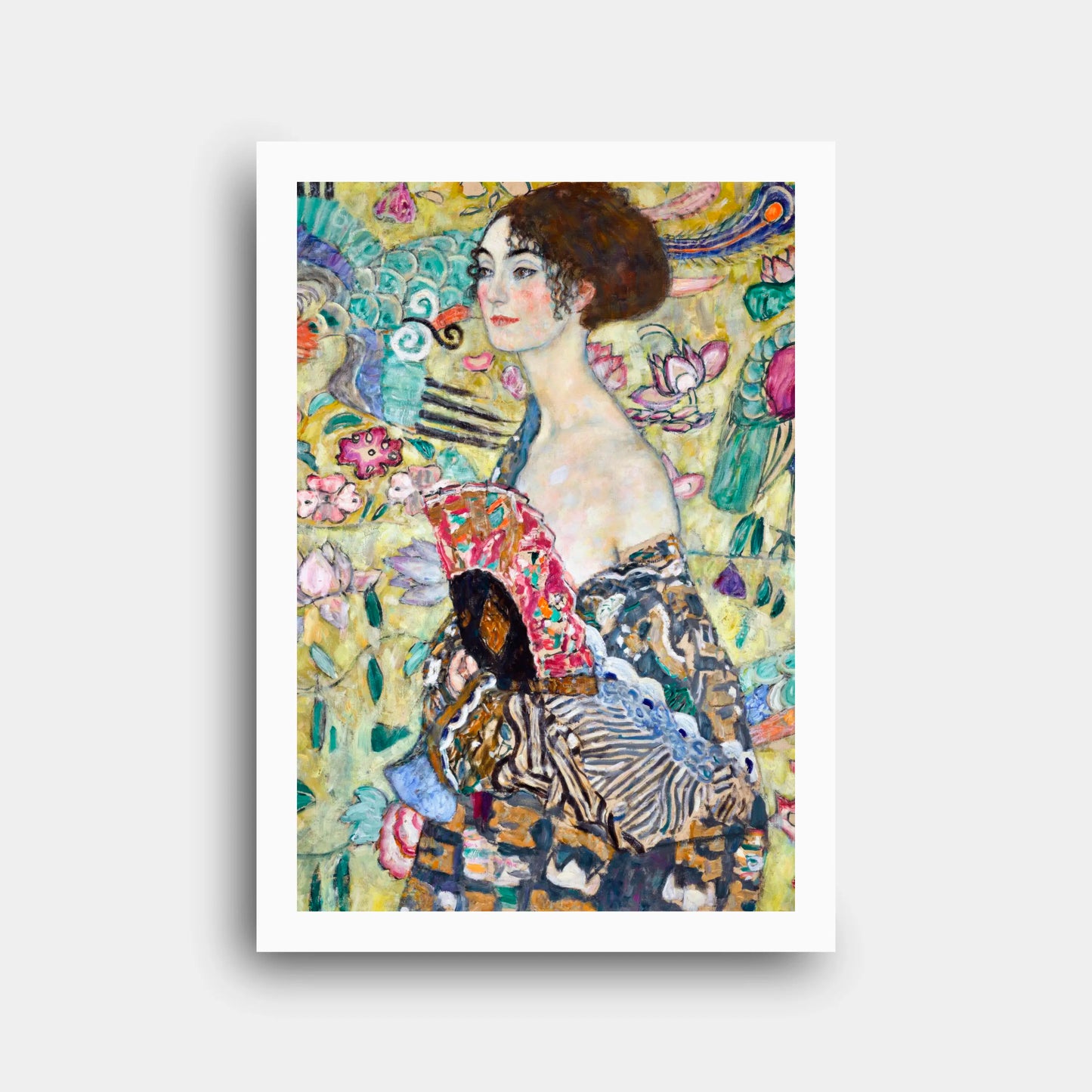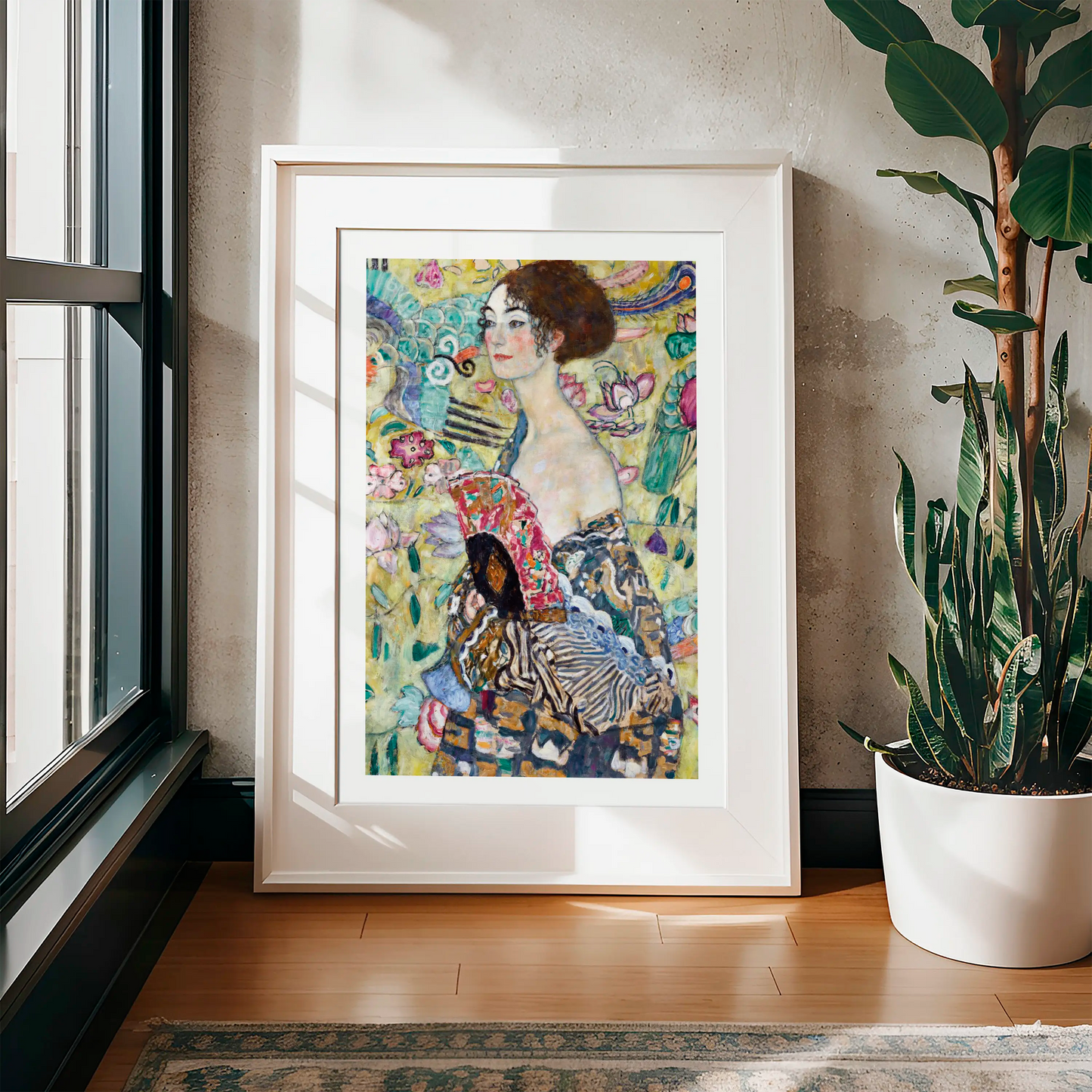Gustav Klimt - Lady with Fan (1917) - Paper Poster N178
Gustav Klimt - Lady with Fan (1917) - Paper Poster N178
Couldn't load pickup availability
Share
Paper Poster | Canvas Print | Digital File
1. Historical and Artistic Context
Gustav Klimt painted “Lady with Fan” in 1917, during the final years of his career and just before his death in 1918. This period coincided with the turmoil of the First World War and the decline of the Austro-Hungarian Empire. Unlike his earlier commissioned portraits of society women, this work was painted freely for himself. Klimt was already Vienna’s most celebrated artist, having co-founded the Secession movement and developed the famous “Golden Phase.” In this late work, he embraced new influences, especially Asian art, which was fashionable in Europe through Japonisme and the fascination with Chinese motifs.
2. Technical and Stylistic Analysis
The portrait is painted on a square canvas, an unusual choice for Klimt’s figure paintings, which he typically reserved for landscapes. The sitter is shown in half-length, her face turned in profile while her gaze looks away. The vibrant background is filled with lotus flowers, phoenixes, and exotic birds. Klimt employs a brilliant yellow ground that sets off the delicate colors of the figure’s robe and fan. His brushwork here is freer and more expressive than in earlier portraits, with visible strokes and areas that appear almost unfinished. This looser style reflects a modern sensibility and a willingness to experiment beyond his polished, decorative works of the early 1900s.
3. Symbolism and Interpretation
The painting incorporates a wealth of symbolic imagery. The fan, central to the composition, simultaneously hides and reveals, symbolizing both modesty and seduction. The lotus flowers scattered across the background signify purity, beauty, and love in Eastern culture. The phoenix suggests rebirth and immortality, while the crane and golden pheasant represent luck and longevity. Together, these motifs imbue the painting with an aura of exoticism and auspicious meaning. The woman herself embodies the archetype of feminine beauty, confidence, and mystery, merging Viennese ideals of allure with Eastern decorative tradition.
4. Technique and Materials
“Lady with Fan” was executed in oil on canvas, measuring 100.2 by 100.2 centimeters. Klimt applied bold pigments reminiscent of Chinese porcelain glazes, using chrome yellow, cobalt blue, jade green, and vivid pinks. His technique combines broad washes of color with delicate linear detailing, especially visible in the feathers of the birds and folds of the robe. Unlike the gold leaf of his earlier period, here the richness is achieved entirely through paint. In some places, such as the sitter’s upper arm, raw canvas remains visible, suggesting an unfinished quality that gives the work immediacy and freshness.
5. Cultural Impact
This painting represents Klimt’s final contribution to portraiture and is often described as a summation of his artistic vision. By blending Eastern decorative traditions with Viennese modernism, Klimt anticipated the global outlook of twentieth-century art. The painting became especially significant in the twenty-first century, when it set a European auction record in 2023, confirming its enduring appeal. Its combination of sensuality, symbolism, and modern style continues to influence both artists and designers who draw inspiration from Klimt’s synthesis of pattern and portraiture.
6. Critical Reception and Scholarly Interpretations
At the time of its creation, the painting was noted for its sensual subject and exotic imagery. Some early viewers found the bare shoulder and suggestive fan provocative. Modern scholars praise it as one of Klimt’s most sophisticated late works, noting the vibrancy of the colors and the expressive looseness of his brushwork. Critics highlight the fusion of cultures, where Japanese and Chinese motifs enrich a Western portrait format. The unfinished passages are now seen as deliberate and integral to its vitality, rather than flaws. Today, “Lady with Fan” is regarded as a masterpiece of Klimt’s final years.
7. Museum, Provenance and Exhibition History
After Klimt’s death, the painting remained in Vienna before entering the Böhler family collection. It later passed through several private collections, including that of Rudolf Leopold. In 1994, it appeared at auction in New York, and in 2023 it sold at Sotheby’s London for £85.3 million, a record for any artwork sold in Europe. The painting has only been exhibited a handful of times, including in Vienna in 1920, Japan in 1981, Kraków in 1992, and again in Vienna at the Belvedere in 2021–22. It is now in a private collection and not on permanent public display.
8. Interesting Facts
1. Klimt’s last portrait, painted shortly before his death.
2. Created on a square canvas, rare for his portraits.
3. Features Chinese motifs like phoenix, lotus, and crane.
4. The fan conceals and reveals, adding erotic symbolism.
5. Bright yellow ground inspired by Chinese porcelain.
6. Unfinished areas reveal bare canvas on the sitter’s arm.
7. The model’s identity remains uncertain.
8. Photographed on Klimt’s easel alongside “The Bride.”
9. Shown publicly only four times in over a century.
10. Sold for over £85 million in 2023, a European record.
9. Conclusion
“Lady with Fan” is both a farewell and a culmination of Gustav Klimt’s career. It distills his lifelong fascination with feminine beauty, sensuality, and decorative richness, while reflecting new artistic freedoms of his late style. By merging Viennese portraiture with Eastern symbolism, the painting stands as a cross-cultural masterpiece. Its unfinished qualities add to its immediacy and modern appeal, while its auction record underlines its timeless value. As Klimt’s last portrait, it remains a powerful and enduring testament to his artistry and influence on twentieth-century art.











